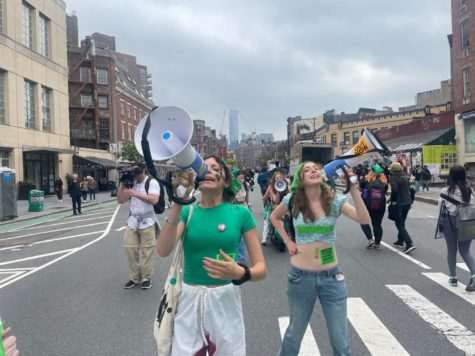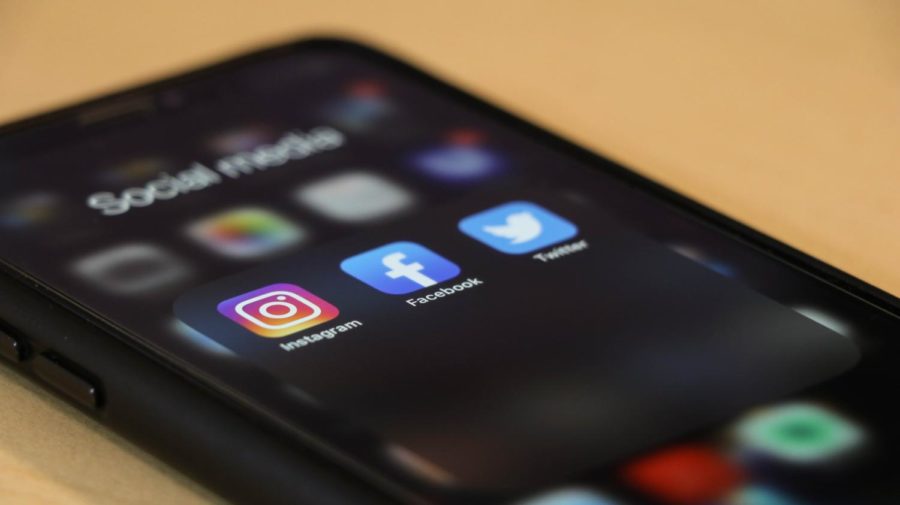Activism or Slacktivism? The Increasing Role That Social Media Plays in Youth Activism
As sites like Instagram, Facebook, and Tiktok rise in popularity every year, the role that it can play in social movements has become more prominent, and the question ultimately arises; can we consider this as true activism?
As social media plays a larger and larger role in our lives, how do we differentiate between what can be replaced by these apps, and what should?
While Black Lives Matter protests were at their peak back in the summer of 2020, the National Football League (NFL) demonstrated their support through a truly heartfelt Instagram post. The black screen, branded with the NFL logo in the middle, caught the attention of millions of viewers, particularly those remembering the NFL’s punishment of former player Colin Kaepernick who was fired after taking a knee during the 2016 season.
The NFL was not the only brand that demonstrated their seemingly passionate support for the movement. Hundreds of companies and millions of users posted under the hashtag #BlackoutTuesday as a way to demonstrate their involvement. Despite mutual interests, Blackout Tuesday seemed to spark some conflict regarding its goals. Were the hoards of black screens drowning out the Black voices that needed to be heard? On Twitter, rapper Lil Nas X wrote, “What if we posted donation and petition links on Instagram all at the same time instead of pitching black images?”
Lil Nas’ views regarding lack of action on the movement, despite online unrest, was supported by statistics, as acts of support for the movement fell from 67% to 55% from June to September of 2020. The #BlackoutTuesday trend fell just as quickly as it rose, losing its number one trending status within a matter of mere weeks.
Blackout Tuesday is one of the more widespread examples of online support for a movement taking a primary form. With the rise of social media, such events of low-commitment contribution have become more frequent, and the question of whether or not online activism equates to more clear acts of defiance and change have arisen for many: Should solely online participation in social justice movements qualify under the now broad, umbrella term of ‘activism?’
Many believe it should not. The term ‘slacktivism,’ first coined by Fred Clark, a Christian blogger, at the 1995 Cornerstone Festival, generally refers to activities that are easily performed, yet considered more effective in making participants feel good about themselves than to achieve the true political goals. While slacktivism can take many forms – wearing political messages on your body or vehicle, or boycotting “problematic” words or phrases, for instance – it has become a term that is primarily used when referring to social media participation in movements, and there is undoubtedly a negative connotation associated with it.
A University of British Columbia study observed the possible dangers of this type of online activism, finding that the social observability of token support – the practice of making only a symbolic effort to be inclusive to members of minority groups or movement – had a significant impact on how likely consumers were to follow up and provide real support for a movement. In other words, when consumers gave public support, they were no more likely to provide further meaningful support for the cause than if someone was just randomly asked for the larger request.
When asked whether or not there was any danger in fully relying on these smaller tokens of support, Kirk Kristofferson, author of the study and expert in social activism, explained that it all depends on the goal. “Social media campaigns may be beneficial for a goal purely focused on awareness. However, from a marketing perspective, there would likely be danger of fully relying on this single tactic to achieve an organization’s goals.” The dangers of this type of activism do not necessarily lie with the tokens of support themselves, but the likely, yet disappointing, fact that the care for the cause will stop here with no further action being taken that ensures contribution to change.
Contrastingly, other studies have shown that supporting a cause through even low effort actions, such as running a 5k for charity or walking in a march, can possibly lead to higher effort support in the future. According to Kristofferson, donating your time is just as valuable as donating something more material, but the key is the amount of effort you are willing to put in. “I personally believe donating one’s time and money to causes one believes is very important to helping important causes and those in need.” Unlike clicking a repost button, taking a significant amount of time out of your day to participate in a walkout still shows a much higher level of commitment.
Yet, for those with limited power to make a change, online activism is a way to make one’s voice heard. Even if the change may seem minimal, it is relevant regardless. Students around the world recognize the dangers of social media as a form of participation, yet many still see it as an accessible way to get involved. Christopher Procaccino ’25 said, “For us students, social media is enough. We shouldn’t be expected to do anything because, simply put, we can’t.”
This is particularly relevant when it comes to voting rights. Before online options arose, there was really no easy, accessible way for those under age to participate in the movements they believed in. While these legal rights have not changed, there is now an attainable way to get involved, and Procaccino is not alone in his belief that these strategies are effective and thus, should be utilized.
A study done by Eastern Illinois University found that with the rise of social media as a form of activism, more students are likely to engage in social movements, regardless of how this engagement takes form. “Social media is undoubtedly not doing that much, but I don’t think that’s the point,” Procaccino said. “The point is to talk about it. Talking about it is helpful in its own right.”
Bronx Science’s own students have taken steps to make these ideas a reality. Throughout various social movements, students have not only created social media handles to spread awareness about issues, but to also share information about walkouts, protests, and other ways that students can take action to support a cause they believe in. One of the accounts, created in June of 2022, raised over 900 followers with supporters from students across New York City, spreading information regarding human rights, city-wide walkouts, and more to New York City youth.
Valentine Giret ‘25, co-founder of the Rise Up movement’s New York City youth stem said, “Lots of teenagers are more passionate about certain movements than it may seem, but they just don’t know how to get involved. Instagram was a way to bring awareness to them in particular.”
While Giret’s youth group would never have been able to make their voices heard in the way that they did without social media, the key to their true success was the further action that they took. When asked if the group would have had the impact that they did on New York’s younger generation without their spreading of information regarding walkouts, Giret said, “I don’t think it would have had a net harm, but there definitely would not have been a net benefit. The key to leaving a lasting impact is real action.”

A study done on the Implications of Social Media on Student Activism found that overall, the rise of social media has a positive correlation with student activism. The statistics prove that this is true. Nevertheless, it is important to note that there is a line that has to be drawn when it comes to what we consider activism. “It’s the idea of talking the talk but not walking the walk,” said Alma Arazi ’25. “If you’re posting constantly on social media but not taking initiative to change it through organizing protests or donating or volunteering, then it’s kind of a mute point.”
There is no doubt that social media has been an unmatched medium for younger generations to make their voices heard in ways that were never possible before. Yet, as these generations grow older and more opportunities are available, the hope is that they will be able to do more to make a significant impact. It seems that the key to making a true difference is to spread change, along with awareness, to the rest of the world.
“It’s the idea of talking the talk but not walking the walk,” said Alma Arazi ’25. “If you’re posting constantly on social media but not taking initiative to change it through organizing protests or donating or volunteering, then it’s kind of a mute point.”
Claire Elkin is a Copy Chief for ‘The Science Survey.’ She believes in the power of journalism and how it can shed light on topics and issues that...











